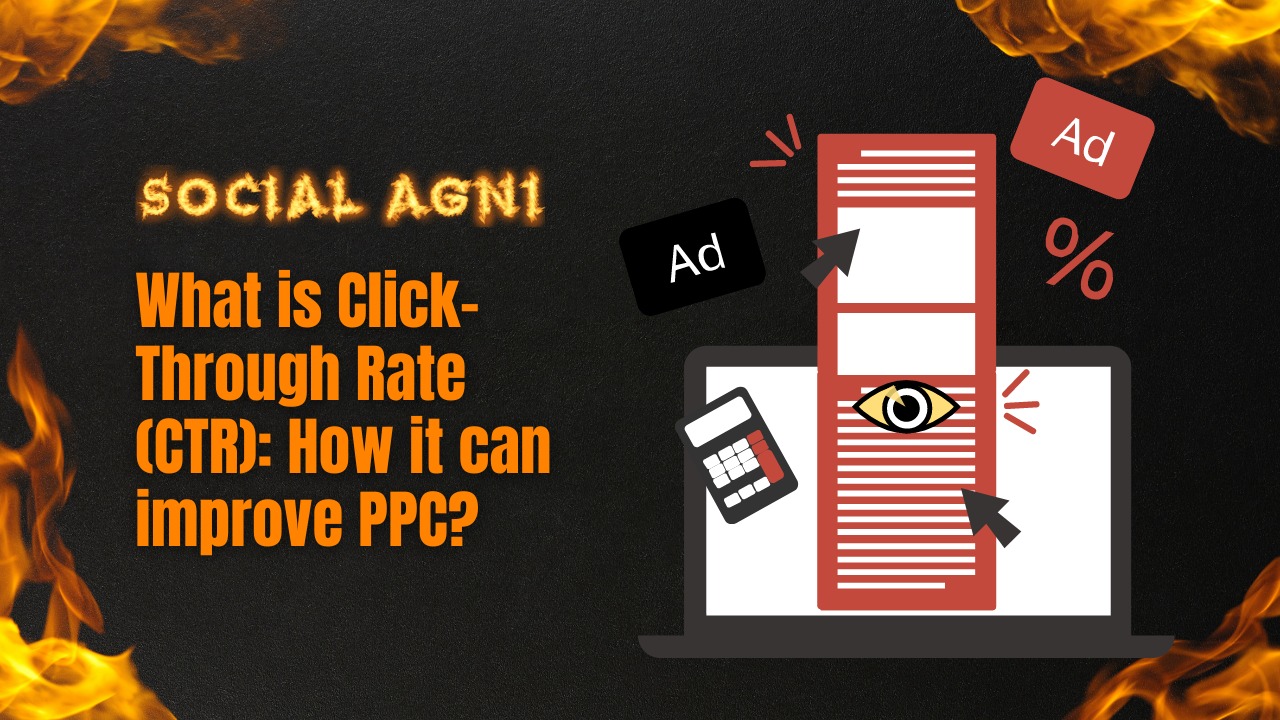Click-Through Rate (CTR) is an important metric for Pay-Per-Click (PPC) advertising, and it can have a significant impact on the success of your PPC campaigns. In this article, we will explain what CTR is, how it is calculated, and how it can be used to improve your PPC performance. What is Click-Through Rate (CTR)? Click-Through Rate (CTR) is a gauge utilized for assessing the performance of internet marketing campaigns. It is computed by dividing the number of clicks an advertisement receives by the total number of times it is displayed or viewed, which is referred to as impressions. CTR is expressed as a percentage, and a higher CTR indicates that more people are clicking on the ad relative to the number of times it is displayed. CTR is an important metric for online advertisers because it is an indicator of how well their ads are resonating with their target audience. A high CTR indicates that the ad is relevant and compelling, and that the audience is engaging with the content. On the other hand, a low CTR suggests that the ad is not resonating with the audience, and that changes need to be made to improve the campaign’s performance. By tracking and optimizing for CTR, advertisers can improve the effectiveness of their campaigns and achieve better ROI. How is CTR Calculated? CTR is calculated by dividing the number of clicks an ad receives by the number of times the ad was displayed or viewed (impressions). The resulting percentage represents the proportion of people who clicked on the ad after seeing it. For example, if an ad is displayed 1,000 times and receives 50 clicks, the CTR would be 5% (50/1000 x 100%). A high CTR indicates that a larger proportion of people who saw the ad found it relevant or interesting enough to click on it. A low CTR, on the other hand, indicates that the ad may not be resonating with the intended audience or that it may need to be optimized to improve its effectiveness. It’s important to note that CTR should not be the sole metric used to measure the success of a PPC campaign. Other metrics such as conversion rate, cost per click, and return on ad spend should also be considered. However, CTR can provide valuable insights into the effectiveness of your ad copy, targeting, and overall campaign strategy. By monitoring and analyzing your CTR, you can identify areas for improvement and optimize your campaigns for better performance. Why is CTR Important for PPC Advertising? CTR is an important metric for PPC advertising because it can indicate how well your ads are resonating with your target audience. A high CTR generally means that your ad is relevant and compelling to your audience, while a low CTR may indicate that your ad needs to be optimized or that your targeting is off. In addition to measuring ad effectiveness, CTR can also have a direct impact on the success of your PPC campaign. The higher your CTR, the more likely it is that your ad will generate conversions at a lower cost. This is because a high CTR leads to a high Quality Score, which can result in lower costs per click and higher ad rankings. How Can You Improve Your CTR? There are several ways to improve your CTR and optimize your PPC campaigns for success: Write Compelling Ad Copy Your ad copy is the first thing that your audience sees, and it needs to be compelling enough to convince them to click. To write effective ad copy, you need to understand your target audience and what motivates them. Use attention-grabbing headlines and targeted messaging to capture your audience’s attention and encourage clicks. In addition to being compelling, your ad copy should also be clear and concise. Use language that is easy to understand and avoid industry jargon or buzzwords. Make sure that your ad copy accurately reflects the content of your landing page, and avoid making promises that you can’t keep. Use Relevant Keywords The cornerstone of a prosperous PPC campaign is the utilization of effective keywords. They are the search terms that your potential customers are using to find products or services like yours. To ensure that your ads are reaching the right people, you need to use relevant keywords that accurately describe your business. Use keyword research tools to find the best keywords for your campaign. Look for keywords with high search volume and low competition, and make sure that they are relevant to your ad and landing page. Don’t try to cram too many keywords into your ad copy, as this can make it sound unnatural and spammy. Optimize Your Landing Pages Your landing page is where your potential customers will go after they click on your ad. It needs to be relevant to your ad and provide a clear call-to-action. Make sure that your landing page is optimized for conversions and that it loads quickly. To optimize your landing page, you need to focus on three key elements: design, messaging, and usability. Use a clean, professional design that is easy to navigate and visually appealing. Make sure that your messaging is consistent with your ad copy and that it clearly communicates the value of your product or service. Finally, ensure that your landing page is easy to use and that the call-to-action is clear and prominent. Test Your Ads Testing is an essential part of any successful PPC campaign. By testing different ad copy, images, and calls-to-action, you can identify what resonates best with your target audience and optimize for the highest CTR. To test your ads, use A/B testing to compare different versions of your ads. Create two versions of your ad with one key difference (such as a different headline or call-to-action) and run them simultaneously. Analyze the results to determine which version performed better, and use that version to optimize your campaign. Refine Your Targeting Targeting is another critical component of PPC advertising. To ensure that your
